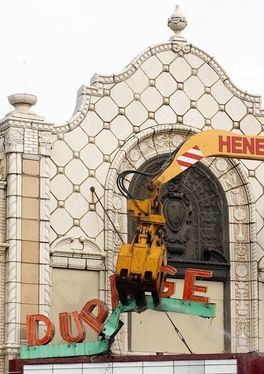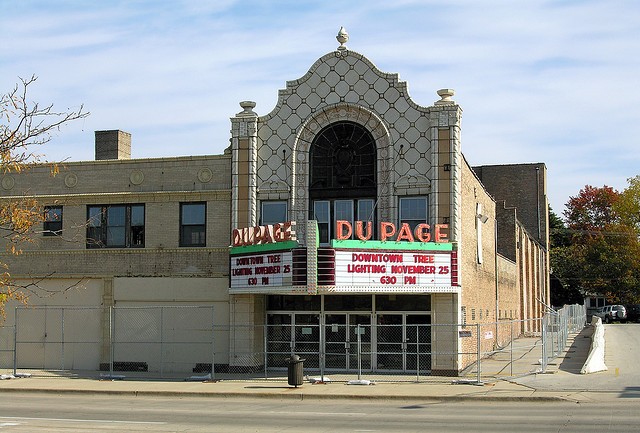
rare late 1920’s american baked black glazed figural terra cotta dupage theater exterior facade “comedy” head or mask fragment with flowing hair – rudolph g. wolff, architect
51-16579-13
Category
Chicago TheatresAbout This Item
historically important and one-of-a-kind late 1920’s american exterior baked black glazed terra cotta “comedy” head or mask fragment salvaged from the non-extant dupage theater, lombard, il. the art deco style theatrical mask with flowing hair was originally located above the theater’s entrance within a massive arched top recessed alcove. the figural fragment was likely fabricated by the american terra cotta company, chicago, il. great overall condition, with light surface wear consistent with age. the dupage theater was the creation of the midwest paramount theater corporation. opened on july 28, 1928, this movie palace was designed by architect r.g. wolff, who was associated with the chicago architecture firm of rapp and rapp, which is recognized as the foremost theater architectural firm in american history. the dupage theater was one of the rare atmospheric style theaters first conceived by famed architect john eberson. using a combination of architectual features and special lighting effects, the theatergoer was transported to an outdoor spanish garden setting with blinking stars covering a patio. in theaters like the dupage, the building and its special lighting effects were as much a part of the show as the entertainment presented onscreen and/or onstage. the dupage theater played host to all the great classic films, as well as featured live entertainers such as gene autry, pat butram and george gobel. in may of 2007, after years of controversy and struggle, the theater was demolished to make way for future development. measures 14 x 14 x 6 inches.




